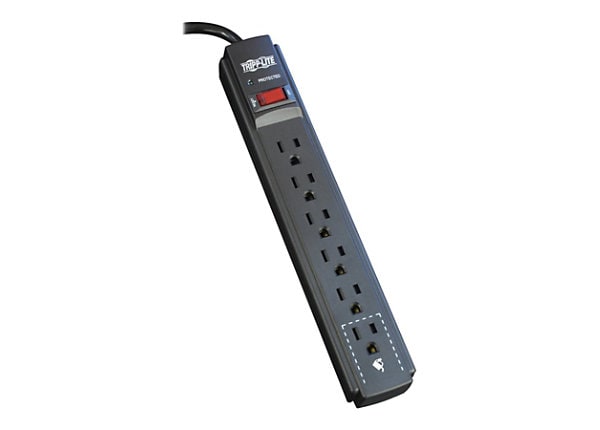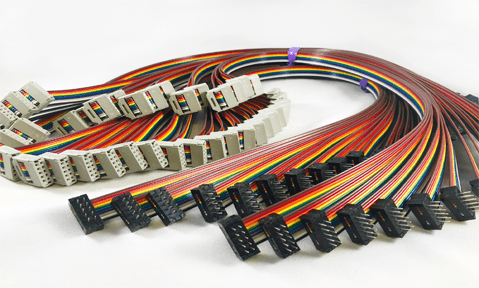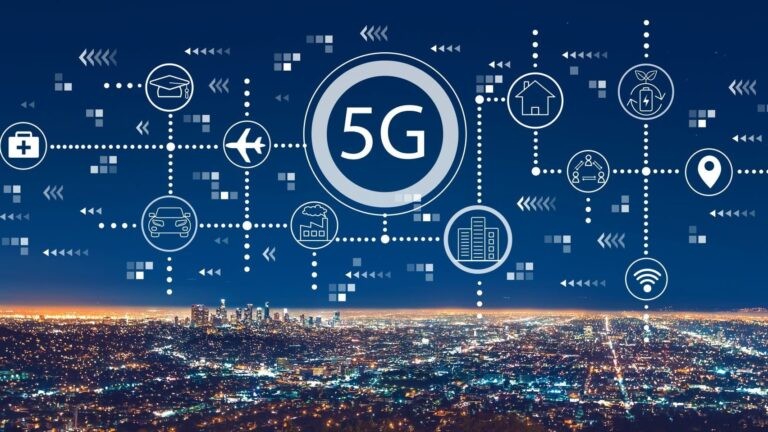In a time when electronic devices play a crucial role in our everyday activities, it is vital to safeguard them against power surges. Surge protectors are indispensable instruments designed to shield delicate electronics from voltage spikes that may cause harm or malfunction. This article will examine the basic principles of surge protectors, the various types available, their operational mechanisms, essential features, and their significance in protecting electronic devices. Additionally, we will address optimal practices for utilizing surge protectors and the advancements anticipated in surge protection technology.
1. Understanding Surge Protectors

1. What Is a Surge Protector?
A surge protector is an apparatus specifically engineered to safeguard electrical devices from voltage surges by regulating the voltage supplied to them. Power surges can arise from various sources, such as lightning strikes, power outages, or abrupt fluctuations in electricity consumption. Surge protectors serve as a protective barrier between the electrical outlet and the devices connected to it, absorbing excess voltage and preventing it from affecting sensitive electronic equipment.
2. How Surge Protectors Function
Surge protectors function by redirecting excess voltage away from connected devices. Upon the occurrence of a voltage surge, the surge protector identifies the voltage increase and channels it safely to the ground. Typically, surge protectors incorporate components such as Metal Oxide Varistors (MOVs) and Transient Voltage Suppressors (TVS) to facilitate this process.
Metal Oxide Varistors (MOVs): These components are fundamental to most surge protectors. They allow electrical current to flow when the voltage surpasses a predetermined threshold, thereby redirecting the excess voltage to the ground.
Transient Voltage Suppressors (TVS): These devices react more swiftly than MOVs and are utilized alongside them to offer an additional layer of protection.
Additionally, surge protectors may feature filters designed to minimize electromagnetic interference (EMI) and radio frequency interference (RFI), thereby further enhancing the safety of connected devices.
2. Types of Surge Protectors
Surge protectors are available in various configurations, each tailored for distinct applications. Familiarity with the different types of surge protectors enables users to select the most appropriate option for their requirements.
a. Basic Surge Protectors
Basic surge protectors are straightforward devices that connect to a wall outlet, offering a limited number of outlets for device connections. Their primary function is to guard against voltage spikes, although they may lack additional features such as indicator lights or electromagnetic interference (EMI) filtering.
Advantages:
– Cost-effective and user-friendly.
– Ideal for residential use with a few electronic devices.
Disadvantages:
– Limited features and functionalities.
– May not deliver adequate protection for high-value electronics.
b. Surge Protector Power Strips
Surge protector power strips merge the capabilities of a power strip with surge protection. They provide multiple outlets and frequently include features such as individual switches for each outlet, LED indicator lights, and EMI/RFI filtering.
Advantages:
– Convenient for connecting several devices.
– Typically includes extra features for improved usability.
Disadvantages:
– May offer less surge protection compared to dedicated units.
– Some models might not have high joule ratings.
c. Whole-House Surge Protectors
Whole-house surge protectors are installed at the main electrical panel of a residence or building. They deliver comprehensive surge protection for all devices linked to the electrical system, including appliances, HVAC systems, and other hardwired equipment.
Advantages:
– Offers extensive protection for the entire electrical system.
– Shields against larger surges from external sources, such as lightning strikes.
Disadvantages:
– Requires professional installation, which can be expensive.
– May not protect devices plugged into outlets downstream.
d. Point-of-Use Surge Protectors
Point-of-use surge protectors are specifically designed for individual devices or areas within a home or office. These include surge protectors for televisions, computers, and other electronics, providing focused protection for high-value equipment.
Advantages:
3. Key Features of Surge Protectors

When choosing a surge protector, various characteristics can affect its efficiency and appropriateness for particular uses. Below are several essential features to take into account:
a. Joule Rating
The joule rating reflects the amount of energy a surge protector can absorb before it becomes ineffective. A higher joule rating signifies superior protection, as it can manage more substantial surges. For standard household applications, a surge protector with a joule rating of at least 1,000 joules is advisable, while elevated ratings are preferable for delicate electronics.
b. Clamping Voltage
Clamping voltage refers to the threshold voltage at which the surge protector starts to redirect excess voltage. A lower clamping voltage offers enhanced protection for connected devices, as it permits less voltage to reach them. For optimal safeguarding, seek surge protectors with a clamping voltage of 330V or lower.
c. Response Time
Response time denotes the speed at which the surge protector reacts to a voltage spike. Quicker response times (measured in nanoseconds) are advantageous, as they reduce the exposure duration to high voltage.
d. Number of Outlets
The quantity of outlets on a surge protector is a crucial factor, particularly for configurations with multiple devices. Ensure that the surge protector provides sufficient outlets for all devices, and consider options with spaced outlets to accommodate larger plugs.
e. EMI/RFI Filtering
Certain surge protectors feature electromagnetic interference (EMI) and radio frequency interference (RFI) filtering. This capability helps diminish noise and enhances the performance of connected devices, especially in audio and video contexts.
f. Indicator Lights and Alarms
Numerous surge protectors are equipped with indicator lights or alarms that notify users of the device’s operational status. These features can alert users to problems such as a lost ground connection or the need for replacement of the surge protector.
g. Warranty and Equipment Protection Policy
Some manufacturers provide warranties for surge protectors, which may include coverage for connected devices. It is important to verify the details of these warranties.
4. Advantages of Using Surge Protectors
Utilizing surge protectors provides a multitude of advantages, particularly in settings where valuable electronic equipment is present. The following are some significant benefits:
a. Defense Against Power Surges
The foremost purpose of surge protectors is to shield devices from power surges, thereby diminishing the likelihood of damage or malfunction. This protection is especially vital for delicate electronics such as computers, televisions, and home entertainment systems.
b. Prolonged Device Longevity
Surge protectors assist in extending the operational life of connected devices by averting voltage spikes. This not only minimizes the necessity for repairs or replacements but also conserves both time and financial resources for users.
c. Enhanced Safety Measures
By reducing the risk of electrical fires triggered by power surges, surge protectors play a crucial role in overall electrical safety. They safeguard wiring and help prevent overheating, thereby lowering the chances of hazardous incidents.
d. Economical Investment
Investing in surge protectors represents a financially prudent approach to safeguarding valuable electronics. When compared to the potential expenses related to replacing damaged devices, surge protectors are relatively affordable.
e. Wide Applicability
Surge protectors come in various designs and sizes, making them adaptable for numerous applications. Whether for residential, commercial, or industrial purposes, there exists a surge protector tailored to fulfill specific requirements.
5. Best Practices for Using Surge Protectors
To enhance the efficacy of surge protectors, users are advised to adhere to the following best practices regarding installation and usage:
a. Evaluate Power Needs
Prior to acquiring a surge protector, evaluate the power needs of the devices intended for connection. Confirm that the surge protector possesses a sufficient joule rating and an adequate number of outlets for all devices.
b. Select the Appropriate Type
Choose the correct type of surge protector tailored to the specific application. For valuable electronics, consider utilizing point-of-use surge protectors or a whole-house surge protector for extensive protection.
c. Conduct Regular Inspections
Regularly examine surge protectors for any indications of wear or damage. Check for frayed cords, discoloration, or malfunctioning indicator lights. Replace any surge protector that exhibits signs of deterioration.
d. Prevent Outlet Overloading
Avoid connecting multiple surge protectors to a single outlet, as this can result in overloading and heighten the risk of electrical fires. Utilize a single surge protector that has sufficient outlets to accommodate all devices.
e. Maintain Distance from Heat Sources
Surge protectors should be positioned away from heat sources and moisture to avert damage. Ensure there is adequate ventilation around the surge protector to minimize heat accumulation.
f. Adhere to Manufacturer Guidelines
Always comply with the manufacturer’s guidelines for installation and usage. This includes observing the recommended maximum load and refraining from making modifications to the surge protector.
6. The Importance of Surge Protection in Various Environments
Surge protectors are essential components in a variety of settings, including residential, commercial, and industrial environments. The significance of surge protection across these applications is outlined as follows:
a. Residential Use
In home environments, surge protectors are crucial for safeguarding electronic devices such as computers, televisions, gaming consoles, and household appliances. Power surges may arise from lightning strikes, defective wiring, or issues with utility services, underscoring the necessity of surge protection to preserve valuable equipment.
b. Commercial Use
Within commercial spaces, surge protectors serve to shield vital systems, including servers, telecommunications infrastructure, and point-of-sale terminals. Power interruptions can result in data loss and operational disruptions, emphasizing the critical role of surge protection in sustaining business productivity.
c. Industrial Applications
In industrial contexts, surge protectors are indispensable for the protection of machinery, automation systems, and control panels. Power surges can lead to equipment damage, production halts, and safety risks, making surge protection a fundamental requirement for ensuring smooth operations.







